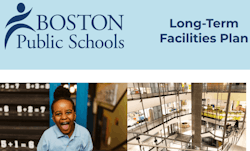Boston facilities plan says dozens of schools may be closed
The Boston public school system could close dozens of its campuses in the coming years to address declining enrollment, deteriorating infrastructure and inequitable student experiences, according to a new plan from the city and school district.
WGBH reports that the plan envisions a district with fewer schools, but larger and newer ones that can offer students broader academic programming and help BPS operate more efficiently and equitably.
The plan states that Boston could close as many as half of its public schools, but shortly after the school district released details of the plan, Superintendent Mary Skipper sent an email to principals assuring them that the district would not be shuttering half of its schools, WHDH-TV reports.
“The plan does outline something we all already know: Many of our buildings do not meet the full needs and aspirations of our students and, over the next several years and likely decades, we must invest in facilities that will,” Skipper said.
Boston Public Schools has 119 buildings, more than are needed to accommodate existing enrollment. Since 2006, enrollment has dropped 13% — from 56,000 students to fewer than 49,000.
The district has submitted the plan to the Massachusetts Department of Elementary and Secondary Education. It does not specify which schools will close or merge or which buildings will be renovated. It does, however, estimate a future range of schools at the elementary and secondary levels.
For example, the district now has 87 buildings serving students in pre-K-6. The plan says that number could eventually decrease to roughly 40 to 80 buildings. For grades 7–12, there could eventually be fewer than 20 buildings, down from the 31 now operating.
Surveys and listening sessions in the district revealed concerns about under-enrolled schools that lacked offerings like Advanced Placement courses and or were unable to field teams in various sports.
The new plan seeks to make the students’ educational experience more equitable with bigger schools that offer multiple core classes in each grade, high-quality athletics and specialty classrooms for art, music and special education.
About the Author
Mike Kennedy
Senior Editor
Mike Kennedy has been writing about education for American School & University since 1999. He also has reported on schools and other topics for The Chicago Tribune, The Kansas City Star, The Kansas City Times and City News Bureau of Chicago. He is a graduate of Michigan State University.
